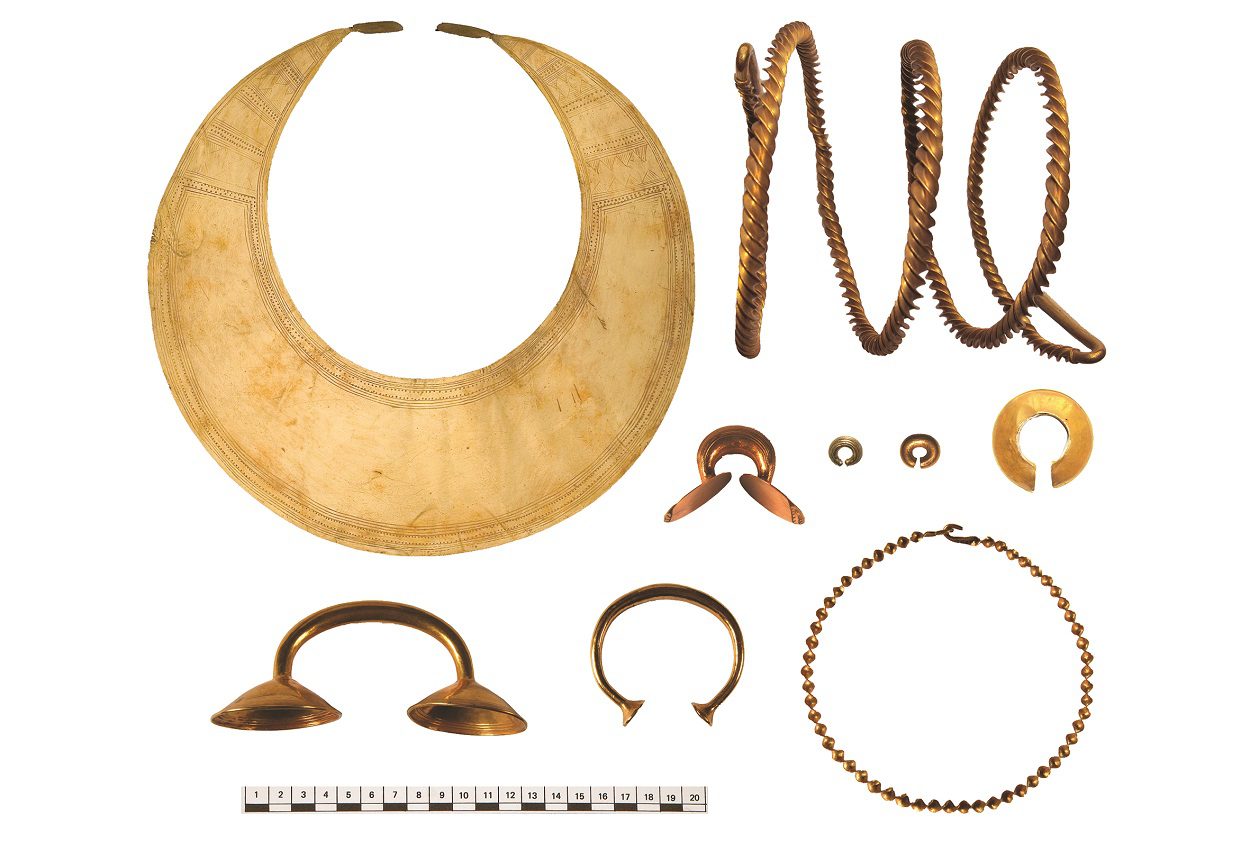In Bronze Age Britain people were not using the scales and weights common on mainland Europe to measure and count their gold. In fact, it appears they were not using any technique to standardise gold objects, eliminating the possibility it served as a currency on the island.
Research had found that the ancient inhabitants of Europe used balance scales, along with standardised units of weight, to regulate the mass of many objects like in modern shops.
Earlier work had indicated the practice spread to gold in Bronze Age Britain, raising the possibility the precious metal was used as money at this time. However, a new analysis by Dr Raphael Hermann, from Georg-August-Universität Göttingen, shows this was not the case.
“We now know that weighing as a method to quantify things did exist in Bronze Age Britain, as evidenced by balance weights and scale beams found in England at Potterne and Cliff End Farm,” said Dr Hermann, “but were gold objects, on a whole, regulated by weight?”
To explore this possibility, Dr Hermann used Cosine Quantogram Analysis (CQA) to examine the weight of over 800 Bronze Age gold objects. The results were published in the journal Antiquity.
“CQA looks at a group of values (for example the mass values of a load of gold objects) and finds common multiples (so-called quanta) that they all share,” said Dr Hermann. The more items that share a quantum, the greater chance this reflects an actual unit being measured.
Ultimately, this analysis did not find any signs of mass-regulation in the hundreds of gold objects studied. This disagreement with previous work likely stems from the fact Dr Hermann used a more thorough sample. This included gold torcs, rings, and more; many of which had been found by the public and reported to the British Museum’s Portable Antiquities Scheme.
“Despite the undoubted attraction of gold and the existence of weighing and measuring in later Bronze Age Britain, objects made of the most precious of the metals apparently were not generally regulated by weight,” said Dr Hermann.
As well as highlighting potential differences on each side of the English Channel, this discovery also has key implications for Britain’s ancient economy. Notably, it suggests gold was not being used as a form of money.
Mass-regulation of metal objects allows them to be used as currency as they will have a guaranteed weight and thus value. Recent research had found that the weight of metal fragments was regulated in continental Europe, suggesting they were used as money. However, this was not going on in Britain.
“Whilst gold would still have had an intrinsic value and probably could have been used for trading in any number of circumstances, it most likely wasn’t a generally recognised form of currency,” said Dr Hermann. Find out more
Header Image Credit : Antiquity





